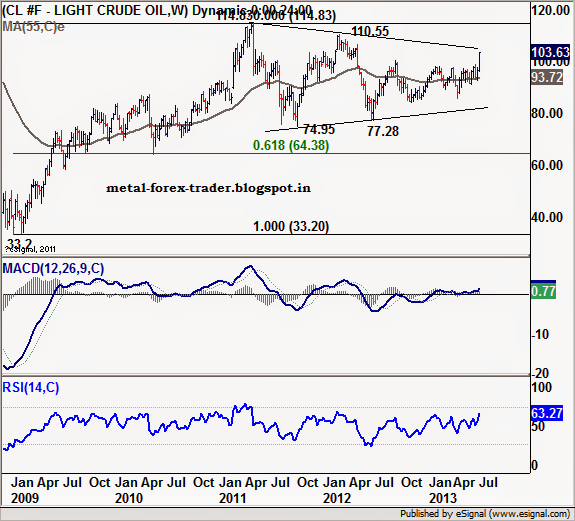Here Are The World’s Five Most Important Oil Fields
Much has been made about the role that hydraulic fracturing – or fracking -- has played in revolutionizing the energy landscape, unlocking vast new reserves of oil trapped in shale rock. This “tight oil” is pouring into the global pool of oil supplies at a crucial time, preventing oil prices from spiking in an age of high demand and geopolitical turmoil.
But the world still relies overwhelmingly on conventional oil production from existing fields, many of which are in decline. The Middle East has dominated the world of oil for half a century and as the list below shows, it remains king. Here are the top five most important oil fields in the world.

1. Ghawar (Saudi Arabia) The legendary Ghawar field has been churning out oil since the early 1950s, allowing Saudi Arabia to claim the mantle as the world’s largest oil producer and the only country with sufficient spare capacity to act as a swing producer. Holding an estimated 70 billion barrels of remaining reserves, Ghawar alone has more oil reserves than all but seven other countries, according to the Energy Information Administration. Some oil analysts believe that Ghawar passed its peak perhaps a decade ago, but Saudi Arabia’s infamous lack of transparency keeps everyone guessing. Nevertheless, it remains the world’s largest oil field, both in terms of reserves and production. It continues to produce 5 million barrels per day (bpd).

2. Burgan (Kuwait) Just behind Ghawar is another massive oil field located in the Middle East. The Burgan field was originally discovered in 1938, but production didn’t begin until a decade later. The field holds an estimated 66 to 72 billion barrels of reserves, which accounts for more than half of Kuwait’s total, and it produces between 1.1 and 1.3 million bpd.

3. Safaniya (Saudi Arabia) The Safaniya field is the world’s largest offshore oil field. Located in the Persian Gulf, the Safaniya field is thought to hold more than 50 billion barrels of oil. It is Saudi Arabia’s second largest producing field behind Ghawar, churning out 1.5 million bpd. Like Saudi Arabia’s other fields, Safaniya is very mature as it has been producing for nearly 60 years, but Saudi Aramco is working hard to extend its operating life.

4. Rumaila (Iraq) Iraq’s largest oil field is the Rumaila, which holds an estimated 17.8 billion barrels of oil. Located in southern Iraq, Rumaila was highly sought after when the Iraqi government put blocks up for bid in 2009. BP and the China National Petroleum Corporation (CNPC) are working together to develop the giant field along with Iraq’s state-owned South Oil Company. The field now produces around 1.5 million bpd, but its operators have plans to boost that production to 2.85 million bpd over the next couple of years.

5. West Qurna-2 (Iraq) Also located in southern Iraq, the West Qurna-2 field is Iraq’s second largest, holding nearly 13 billion barrels of oil reserves. The West Qurna field was divided in two and auctioned off to international oil companies. Russia’s Lukoil took control of West Qurna-2 and successfully began production earlier this year at an initial 120,000 bpd. Lukoil plans on lifting production to 1.2 million bpd by the end of 2017. The neighboring West Qurna-1 field – operated by a partnership of ExxonMobil, BP, Eni SpA, and PetroChina – holds 8.6 billion barrels of oil reserves. They hope to increase production from 300,000 bpd to more than 2.3 million bpd over the next half-decade.
It’s clear that the Middle East is still the center of the universe when it comes to oil. Despite their age, these supergiants remain the oil fields of tomorrow. And as the tight oil revolution in the U.S. plays out, these fields will remain, and the world will continue to depend heavily on the fortunes of a few countries in the Middle East
Submitted by Nick Cunningham of OilPrice.com















